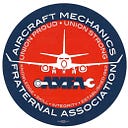GROUNDED: What’s Really Behind The Delay In Southwest Airlines Flights To Hawaii

We’ve been hearing the same thing for more than a year — Southwest Airlines will soon be flying to Hawaii from California. The new routes have been teased in earnings calls and corporate statements for months and months. Many reports stated tickets would start being sold by the end of 2018, with flights beginning in early 2019.
Well, here we are in January 2019 — and the goalposts keep shifting. The latest statements speak to a “peak winter season,” and sources tell the Chicago Business Journal the earliest flights would begin in “March or April.” So what’s really behind the delay — and why is a supposedly transparent airline keeping travelers in the dark about the truth? Here is what’s really happening:
- ETOPS: Southwest can not begin flights to Hawaii until it achieves ETOPS certification, which stands for Extended-range Twin-engine Operational Performance Standards. Essentially, ETOPS is a rule that permits aircraft to fly routes which include a period of time where the aircraft is more than 60 minutes flying time away from the nearest airport suitable for an emergency landing. Obviously this is essential for flights to Hawaii, and a new certification for the airline. This hasn’t happened yet for several reasons.
- Tabletop exercises: One of the elements needed to achieve ETOPS certification is tabletop exercises, which includes the airline and the FAA. This gives Southwest an opportunity to prove ETOPS procedures in a formal setting.
- Proving flights: In addition to the tabletop exercises, the airline will also have to show the FAA it is capable through proving flights, or “validation flights,” which will essentially mimic the exact routes from California to Hawaii and back. As the Business Journal notes, these flights will have “FAA inspectors on board to evaluate Southwest’s ETOPS procedures.”
- Ongoing investigation: Of course, even if Southwest passes these tests, there are other factors which may hold up the ETOPS certification. One main potential issue is the fact that there is still an ongoing investigation by the Inspector General at the U.S. Department of Transportation into the FAA’s oversight of the airline. This investigation looks at the maintenance and safety culture at the airline. Will the FAA give ETOPS certification to Southwest while the airline remains under investigation? It’s certainly no guarantee — and that investigation has shown no signs of ending.
- Contract negotiations: There’s another major issue for the airline though, and that’s the fact that after more than six years of negotiations, Southwest still does not have a ratified contract with its airline mechanics. The Airline Maintenance Technicians are on the frontline — and are the last line — of safety. This contract is important for several reasons, for example, because AMFA mechanics at Southwest are not on the ground in Hawaii, so determining who will handle maintenance checks on aircraft in Hawaii is very much up in the air. On this important expansion, having the buy-in from the technicians who know the planes better than anyone is important — and could have an effect on how quickly Southwest achieves its ETOPS certification.
- [EDIT: 1/16/19] Government shutdown: Another reason for the delay has been the government shutdown, causing non-essential FAA employees to stay away from work and non-essential tasks to be put on hold. This is surely a short-term contributing factor to the delay in Southwest achieving ETOPS — but it is just that: a short-term factor, and a convenient excuse for the other factors listed above.
The “Transfarency” airline? Where’s the real transparency?
These are just some of the potential snags facing Southwest as we enter 2019, with no end in sight in its quest to begin flights to Hawaii. It’s important for the “Transfarency” airline to be transparent with the public, the media — and its employees.
As the champions and protectors of airline safety culture at Southwest, we hope to help in this process. But a key element of that will be a fair and sufficient contract — so we can continue to share our safety expertise as Southwest expands across the Pacific.
Follow AMFA National on Twitter, Facebook and Instagram for more.
